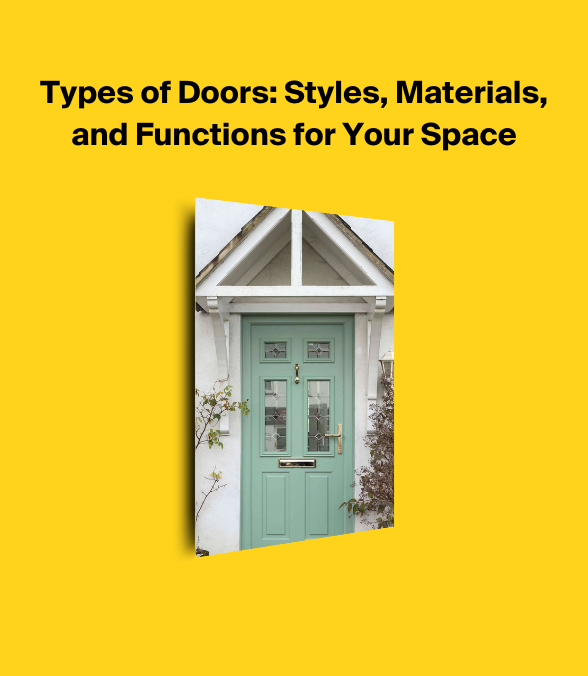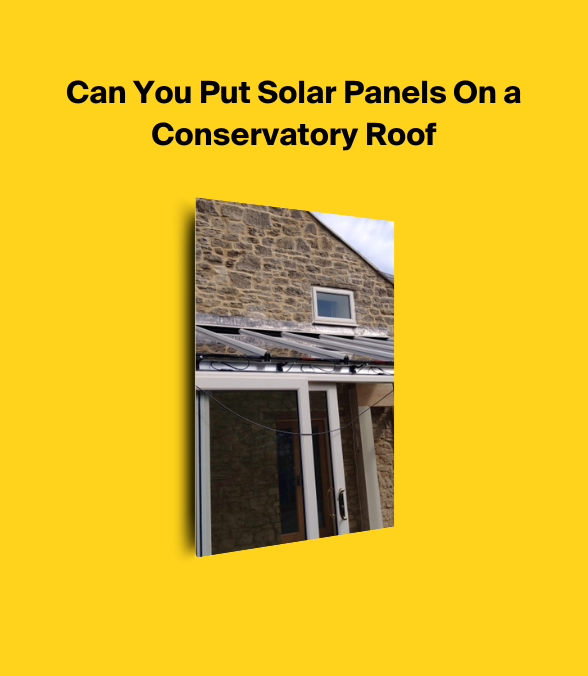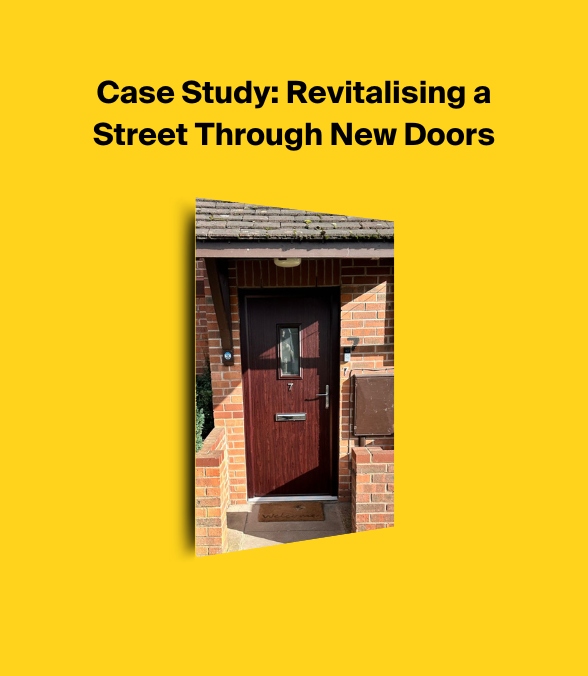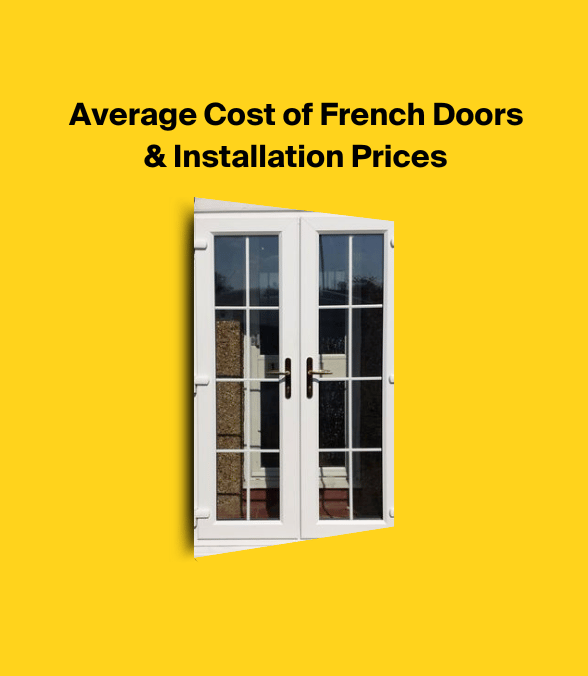Different Door Types
Looking for the perfect door? This expansive guide breaks down the types of doors for interiors and exteriors, reveals the pros and cons of different materials, and offers practical advice for matching doors with their intended functions, ensuring you find the ideal fit for your space.
You can also read our guide on new front door costs to get a better understanding of what kind of price you might be paying for a new door.
All About the Wide Range of Different Doors - Overview
- Doors come in various styles, materials, and functions, accommodating different architectural preferences and practical needs, including traditional panel doors, modern flush doors, and space-saving sliding doors.
- Material choices, such as wood, fibreglass, steel, or uPVC, determine a door’s aesthetic appeal, durability, and maintenance requirements, with options suited to every budget and design requirement.
- Door customisation through hardware and accessories allows for enhanced functionality and personal aesthetics, with considerations for security, durability, and integration with the overall design of the space.

Build your door today!
Get a QuotePanel Doors: Classic and Versatile
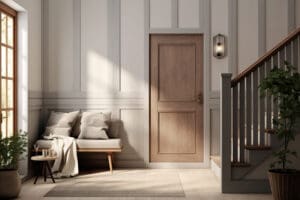
Panelled doors, with their exquisite detailing and flexible nature, have long been a staple in both traditional and modern dwellings.
Their ability to be customised through various combinations of panel numbers, sizes, and shapes makes them a go-to choice for discerning homeowners.
Whether serving as grandiose front doors or providing privacy as interior doors, panelled doors strike a delicate balance between form and function, seamlessly fitting within the architectural vernacular of your abode.
Moreover, advancements in construction mean that today’s panel doors can be engineered to offer even more excellent stability and insulation.
Traditional Panel Doors
The timeless allure of traditional panel doors is unmatched, with styles like Victorian and Shaker gracing the hallways of many storied residences.
Crafted from premium woods such as oak, pine, and walnut, these doors exhibit the natural beauty and distinct grains that only genuine timber can provide. A six-panel door configuration is often embraced for its classic look, suitable for both the interior sanctum and the exterior façade of a home.
Traditional joinery techniques are employed to create features like bolection moulding and raised panels, adding depth and character to each door.
For a touch of modernity, glazed panels may be incorporated to illuminate dark corridors, offering a blend of old-world charm and contemporary functionality.
Contemporary Panel Doors
Contemporary panel doors are a canvas for innovation, embracing new woodgrain patterns and geometric grooves that resonate with the sleek aesthetics of modern homes.
These doors come in a spectrum of finishes, from the warmth of oak and walnut to the cool sophistication of ash and hibachi, not to mention a palette of contemporary hues like grey, black, and white.
The construction of these doors often involves a mix of different woods. It may feature frosted glass or novel panelling to cater to individual style preferences, aligning perfectly with the design ethos of light, openness, and minimalism.
Glazed Panel Doors
Glazed doors, particularly glazed panel doors, serve as beacons of light, inviting the sun’s rays to dance across your floors and walls, creating spaces that feel more open and welcoming.
With options ranging from single large panes to an array of smaller ones, these doors can be tailored in materials and colours to suit any interior design scheme.
Whether you opt for traditional styles with clear glass for communal areas, frosted glass for private offices, or stained glass inserts for an artistic flair, glazed panel doors are a testament to the perfect marriage between beauty and practicality.
They not only enhance the natural light within a space but also maintain privacy and provide a secure barrier against external elements.
Flush Doors: Simple and Modern
Embrace the sublime simplicity of flush doors, whose flat and featureless surfaces offer a clean and uncluttered aesthetic ideal for contemporary settings.
These doors, often constructed from medium-density fibreboard or plywood, feature either solid or semi-solid cores enveloped by smooth veneers like oak, providing a modern touch to any room.
Flush doors are the embodiment of minimalist design, aligning seamlessly with the understated elegance of modern architectural styles.
Interior Flush Doors
Interior flush doors exemplify functional artistry with their sleek profiles and unassuming presence.
Behind their thin timber veneer lies a skeletal wood frame, a testament to modern engineering that offers the look of a solid wooden door without the heft. Stave-core options utilise vertical lengths of more affordable wood, finished with a layer of premium wood veneer for a cost-effective yet stylish alternative.
The hollow-core variety, while not as sturdy or insulating as solid core doors, presents a budget-friendly solution, ideal for areas where a lighter door is sufficient.
Exterior Flush Doors
Exterior doors, especially flush doors, stand as guardians against the elements, crafted from robust materials like hardwood or Glass Reinforced Plastic (GRP) to weather the storms of life. Their design versatility extends to a myriad of colours and sizes, ensuring a perfect match for any architectural style or personal taste.
Moreover, the insulated and sealed construction of these doors not only keeps your home cosy but also contributes to energy efficiency, a boon for both the environment and your utility bills.
Their low-maintenance nature means they require little more than an occasional wipe down, although regular sealing can further enhance their resistance to the vagaries of weather.
While installation is straightforward, it is recommended that professionals ensure a proper fit and optimal performance, often accompanied by detailed instructions.
Customisable Flush Doors
The allure of customisable flush doors lies in their ability to meld seamlessly into the architectural narrative of your property. Whether you’re drawn to textured effects, such as grooves or profiles, or prefer a solid, uninterrupted surface for privacy, these doors can be tailored to your every whim.
Their chameleon-like nature allows them to become an integral part of any design vision, from the most understated to the most extravagant.
And with a vast array of colours and finishes at your disposal, your flush door can become a statement piece that reflects your unique taste and style.

Build your door today!
Get a QuoteSliding Doors: Space-Saving and Stylish
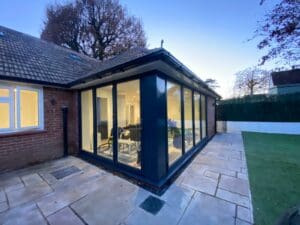
Sliding doors, the epitome of functional elegance, glide effortlessly along their tracks, offering an ingenious solution to space constraints while fostering a harmonious connection between indoor and outdoor spaces.
Patio doors, a beloved variant, are celebrated for their stylish contribution to the home, uniting the sanctuary of the indoors with the freedom of the outdoors.
Large sliding doors, with their expansive glass panels, not only provide a panoramic view but also contribute to a modernist aesthetic that is both captivating and practical.
Internal Sliding Doors
Internal doors, particularly sliding doors, are the architects of space, available in configurations that range from two to four doors, tailored to meet the needs of any room, no matter the size or design requirements.
Notably, sliding wardrobe doors are hailed for their space-enhancing qualities, allowing for a more efficient and organised living area. They can be custom-designed to echo the decor of other doors within a residence, creating a cohesive and refined aesthetic.
The UK market boasts an extensive assortment of bespoke internal sliding doors, offering a wealth of customisation options in materials like oak and walnut and an array of colours to suit any style preference.
External Sliding Doors
External sliding doors serve as a visual and physical bridge to nature, inviting the beauty of a garden or the serenity of a patio into the home.
The large glass panels characteristic of sliding patio doors blur the boundaries between the interior and the exterior, fostering a sense of expansiveness and freedom.
Bi-fold doors, with their ability to fold back and glide effortlessly, can transform a wall into an open gateway, merging indoor living areas with the outdoors in a way that is both functional and aesthetically pleasing, adaptable to a variety of architectural styles.
Pocket Sliding Doors
Sliding doors are the magicians of interior design, disappearing into the wall to conjure additional space where it’s most needed, such as in compact bathrooms or cosy studies.
Pocket doors and their versatile design allow for single or double-door configurations and even curved shapes, offering a unique element that can adapt to varying spatial requirements.
Glass pocket sliding doors offer the following benefits:
- Modern aesthetic
- Preserves functionality of natural light penetration
- Enhances interior illumination without sacrificing space
- Range of options available
- Options for classic, glass, and synthesis styles
- Seamless finish without architraves
- Incorporation of recessed flush pull handles to ensure smooth sliding without interference.
Composite Doors: Durable and Low Maintenance
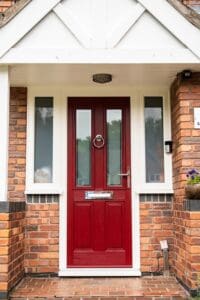
Composite doors are the consummate blend of strength and convenience, engineered from a medley of materials that include:
- a reinforced steel frame
- hardwood solid timber core
- foam core option
- a durable glass-reinforced plastic (GRP) skin
This composite doors construction provides remarkable energy efficiency, security, and resilience against adverse weather conditions, ensuring that your home remains safe, warm, and stylish.
While the initial cost of composite doors may be higher and they are not typically designed to be repainted, their robustness and security features make them a worthwhile investment for those seeking peace of mind and low maintenance.
Benefits of Composite Doors
Composite doors, designed for longevity, are synonymous with:
- Strength
- Resilience
- Minimal maintenance
- Maximum durability
Their construction, featuring an insulating foam core and a sturdy outer frame, ensures their longevity. Many composite doors come with extensive warranties, often outlasting the promised decade of service.
The superior features of composite doors include:
- Thermal efficiency, which retains warmth and reduces energy bills
- State-of-the-art safety features, including anti-drill and anti-pick cylinders
- Weather resistance, with effective seals to shield homes from draughts and inclement weather
These features make composite doors a great choice for a comfortable, secure, and eco-friendly home.
Understanding the pros ands cons of composite doors will help you make an informed decision if they are right for your home.
Aesthetically versatile, they are available in designs that can complement any home style, whether contemporary or traditional, contributing to a visually striking entrance.
For those living in busy urban areas, the added benefit of acoustic insulation can be a sanctuary from the outside noise.
Composite Door Styles
Composite doors are a testament to stylistic diversity, offering a range that satisfies the tastes of both classic and contemporary design aficionados.
The Traditional Range balances the nostalgic charm of classic designs with the demands of modern living, making these doors a versatile choice for a broad spectrum of properties.
For those seeking a touch of opulence, the Italia Collection draws inspiration from Italian elegance, adding a sense of luxury to any home’s entrance.
These doors can be tailored to individual preferences with a selection of classic and custom colours, ensuring that homeowners can match their doors to the unique character of their homes while enjoying long-lasting colour retention.
To create a cohesive and impressive entrance area, homeowners can also choose matching side panels, available in whole or half-height designs.
Composite Door Prices
The financial investment in composite doors can range broadly from an accessible £500.00 to a more premium £1,500.00, reflecting the diversity in design, colour, and security features available.
Whether opting for a standard model or splurging on a luxury collection that boasts Italian-inspired aesthetics, there’s a composite door to fit every budget.
Additional components, such as side panels or specialised hardware, can influence the total cost of your composite door, making it important to consider all elements during the selection process.
Some manufacturers even offer transparent pricing structures, enabling customers to view supply-only prices and obtain detailed quotations for installation services if desired.

Build your door today!
Get a QuoteFrench Doors: Elegance and Natural Light
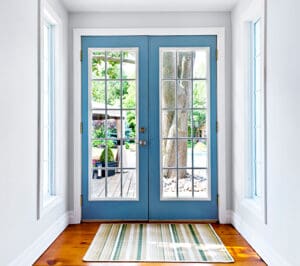
With their expansive glass panes, French doors were born out of Renaissance France’s love for light and space.
Today, they continue to enchant homeowners with their ability to flood interiors with natural light, offering unobstructed views and a sense of grandeur.
These doors are not only about aesthetics; they functionally enhance the flow of light through houses, joining areas like dining rooms and living spaces or opening up to inviting patios.
French doors, also known as double doors, typically consist of two standard doors opening from the centre, a design without a central mullion, which allows for broader access points but necessitates space for their outward swing.
Interior French Doors
Interior French doors are the bearers of brightness and an illusion of expanded space, particularly beneficial in smaller homes.
They are strategically placed in key areas such as offices, living rooms, and bedrooms, not only to elevate the elegance of these spaces but also to offer the flexibility of separating or joining them as desired.
Whether implementing traditional French doors that exude Victorian charm or opting for modern iterations that incorporate advanced security and durability, there is an array of material options, such as composite, to suit varying design preferences.
Exterior French Doors
Exterior French doors serve as a picturesque entryway to the natural world, often used as stylish exits to gardens, terraces, or conservatories.
They not only offer a seamless transition from the indoors to the outdoors but also stand resilient against weather elements with their robust construction and sealing.
The strategic placement of these doors can significantly enhance the connectivity between indoor and outdoor living spaces, fostering an environment where the beauty of nature can be enjoyed effortlessly.
French Door Materials
The choice of material for French doors can profoundly influence their function, aesthetics, and longevity. Options include:
- uPVC, known for its cost-effectiveness and low maintenance
- Wood, which offers a timeless, classic look
- Composite, which brings together various materials for strength and a flexible appearance.
Aluminium presents a strong and minimal maintenance choice with a modern flair, ideal for contemporary buildings.
Fibreglass stands out for its robustness and resistance to warping, making it suitable for a variety of climates. While wooden French doors are often the go-to for older properties, they require consistent maintenance to prevent weathering.
The cost for French doors varies significantly, influenced by your choice of material and the type of glass used, with aluminium being a premium choice and uPVC a more budget-friendly option.
Fire Doors: Safety and Compliance
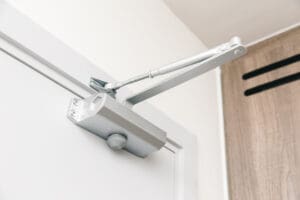
Fire doors are critical components in maintaining the safety of a property, expertly engineered to contain fires and prevent the spread of smoke.
These doors are often mandated between garages and homes, in multi-story houses with stairwell doors, and are recommended for kitchens.
Fire doors come with ratings such as FD30 to FD120, indicating the number of minutes they can resist fire, and are tested for stability and integrity from both sides to ensure they meet stringent safety standards.
Fire Door Ratings
Understanding the fire-resistance ratings of fire doors is paramount when choosing the right one for your needs.
Ratings like FD30 fire doors and FD60 fire doors denote the length of time, in minutes, the door can withstand fire. It’s important to select doors that comply with recognised standards such as BS 476-22:1987 or BS EN 1634-1:2014, and to consider third-party certification as assurance of effectiveness.
Regular inspections, recommended every six months, are essential to maintain the door’s functionality. Diverse styles are available, from traditional panel fire doors to contemporary and flush options, ensuring that safety does not compromise the design.
Fire Door Materials
The materials used in the construction of fire doors play a pivotal role in their functionality. Some common materials used for fire doors include:
- Steel: Steel fire doors offer superior protection against high temperatures.
- Wood treated with fire-resistant sealants: These fire doors provide a balance between aesthetics and safety.
- Metal-clad fire doors: These doors have a metal exterior for added durability and protection.
- Timber-clad fire doors: These doors offer a more affordable alternative without compromising on safety standards.
It is essential to pack any voids between the door frame and wall with mineral wool to prevent smoke and fire penetration, a critical aspect of fire door installation.
Fire Door Installation
The installation of fire doors is a meticulous process that must adhere to the latest UK regulations introduced in 2023.
These regulations require the inclusion of intumescent strips, gasket systems, and metal edge covers to ensure enhanced safety.
Fire door installations must conform to Building Regulations, using certified components that align with the door’s fire rating. Any onsite modifications, such as cutting for glazing apertures, could invalidate the door’s certification and must be performed by a licensed processor.
To guarantee that the doors function as an integral component of the building’s passive fire protection, a trained professional must execute the installation.
Detailed, product-specific instructions are provided with each certified fire door and must be followed precisely to maintain the door’s fire protection capabilities.
It’s also important to ensure that the door is fitted correctly, with precise measurements taken and appropriate gaps maintained as specified by the manufacturer. Intumescent seals are key for expanding under high temperatures to seal any gaps and prevent the spread of smoke and fire.

Build your door today!
Get a QuoteMaterial Options for Doors
The material of a door affects not only its appearance but also its performance and longevity. With options ranging from traditional woods to modern marvels like fibreglass and steel, each material brings its unique characteristics to the table.
Here are some key features of different door materials:
- Wooden doors offer versatility in aesthetics and can be painted to suit any taste.
- Fibreglass doors boast high insulation and durability, with minimal maintenance required.
- Steel doors provide a contemporary look with low upkeep, though they can be challenging to repair if scratched or dented.
- uPVC doors are renowned for their durability and require little maintenance.
Consider these factors when choosing the right material for your door.
Investing in high-quality materials not only enhances the door’s resistance to wear and tear but also avoids the need for premature replacements, providing long-term economic benefits.
Materials that offer better insulation, such as energy-efficient glazed panels, can significantly contribute to maintaining interior climates and reducing energy costs.
Wood Doors
Wooden doors have been the cornerstone of door construction for centuries, with hardwoods like oak and walnut providing the resilience and visual appeal desired in many homes.
Softwoods like pine offer a more cost-effective yet equally attractive alternative. The longevity of solid wood doors, especially hardwood ones, is notable. With proper treatment, these doors can endure a lifetime, maintaining their form and appearance.
Timber doors are particularly suitable for traditional properties and can be finished with various oak door treatments to protect and enhance their natural beauty.
Engineered oak doors mimic the appearance of solid oak at a more affordable cost and tend to retain their looks for a longer period. For those living in rural areas, stable doors provide practicality and charm, allowing for ventilation while maintaining security and containment.
The price range for timber doors varies significantly, ensuring there’s an option for every budget.
Steel Doors
Steel doors, with their core of polyurethane or polystyrene and a protective steel covering, offer a synthesis of strength and practicality.
The gauge of the steel cover, which can range from 20 to 26, indicates the thickness and durability of the door.
These doors are celebrated for their ability to withstand considerable wear and tear and for being highly weather-resistant, making them a formidable choice for homeowners seeking robustness.
However, it is worth noting that while steel doors are resilient, they can present challenges in repair and modification, necessitating careful consideration when selecting them for your home.
uPVC Doors
uPVC doors have become a popular choice since their introduction, particularly in modern properties and new builds, due to their:
- Durability
- Ease of maintenance
- Lifespan that can extend beyond two decades
- Ability to endure extreme weather conditions
- Contribution to energy efficiency by insulating the home
While they may not be as aesthetically versatile as other materials, their longevity and practicality make them a compelling choice for those seeking a durable and cost-effective door solution.
Additionally, uPVC doors are an economical option that can provide significant cost savings over time.
Aluminium Doors
Aluminium doors are the embodiment of modernity, offering durability, low maintenance, and a sleek finish that is ideal for contemporary homes.
Their suitability for modern property styles is unparalleled, providing a look that complements the clean lines and minimalistic design of current architectural trends.
Enhanced security is a given with aluminium doors, thanks to the incorporation of Euro cylinder locks within multi-point locking systems, which fortify the door against unauthorised entry.
Aluminium is commonly used for patio doors or aluminium bifold doors due to the strength and durability they provide.
Customising Your Door: Hardware and Accessories
Customising your door with the right hardware and accessories can make a striking difference in both its functionality and aesthetic appeal.
From the sleek mechanics of sliding door systems like the Vetroglide to the personalised colours available for composite stable doors, the options are boundless.
Pre-finished doors are also an option for those seeking a quick and effortless upgrade, as they come treated from the factory and are ready to be hung without the need for additional finishing.
Types of Door Handles
Door handles serve as both functional tools and design statements, with a few types of door handles, including:
- Lever handles can be mounted on a backplate for a traditional look or a rose for a more contemporary feel. They may include locking mechanisms for added security.
- Pull handles, which are ideal for different doors that need to be pushed or pulled open. They are available in designs that suit both modern and traditional tastes.
- Door knobs are a more classic option, which comes in different variations to accommodate the specific functionality of each door, from privacy to passage.
Whether you’re looking for a handle that complements a traditional door or a minimalist option for a pocket sliding door, there are styles to match any door type.
or those desiring a subtler look, concealed handles provide a sleek solution that remains flush with the door surface, maintaining a clean line throughout the space.
Locks and Security Features
Security is a paramount consideration when customising doors, and modern locks offer a range of features designed to safeguard your property. Here are some options to fit every security need:
- Smart locks managed through apps
- Mortice deadlocks
- Rim automatic deadlatches
- Enhanced protection features, such as drill-resistant hard plates
- Locks that meet rigorous standards like BS3621
These options provide homeowners with peace of mind.
Moreover, multi-point locking mechanisms on external doors and the robust construction of uPVC doors with a steel core add layers of security, making it more challenging for intruders to gain access.
Decorative Elements
The decorative elements of a door can significantly influence the overall aesthetic of a room. These elements range from classical adornments such as ceiling roses and 3D wall panels to modern touches like knurled handles and back-to-back pull handles, which are especially suitable for commercial settings.
Door frames can be embellished with trims or mouldings to add a layer of sophistication and decorative details can be tailored to fit both classic and modern interiors.
Ironwork details, such as grilles and decorative bars, add a sense of tradition and additional security, while decorative door knobs serve both function and form, aiding in closing doors while enhancing their visual appeal.
The colour of the door should harmonise with the home’s overall colour scheme, with options to paint wood doors or choose from a variety of pre-finished colours.

Build your door today!
Get a QuoteChoosing the Right Door for Your Space
Selecting the ideal door for your space is a balance of identifying your needs, comparing different door types, and considering your budget.
Whether you’re contemplating the sound-dampening qualities of a heavy oak door for a bustling hallway or the lightness of a softwood door for a bedroom, the right choice enhances the comfort and functionality of your living space.
Factors such as privacy, user intentions, and the desired impact on the space’s aesthetic play into this decision, ensuring that the door you choose not only meets your practical requirements but also elevates the style of your home.
Assessing Your Needs
Before falling for the charm of a particular door type, it’s important to assess your needs carefully. If you’re considering patio doors, weigh the door’s cost against the value it will add to your home.
Identify key features such as energy efficiency and security that are non-negotiable, and manage design elements within the constraints of your budget.
Ensuring a wise investment also means researching door companies, and checking reviews and certifications to guarantee the quality and functionality of the doors you’re considering.
Comparing Door Types
When comparing door types, it’s essential to consider personal preferences and the style of your home to ensure that the door you select will continue to bring satisfaction well beyond current trends. Look at functional needs such as:
- the construction of the door
- the method of opening
- the need for privacy and noise reduction
- the goal of creating a seamless flow between spaces
By considering these factors, you can choose a door that meets your specific needs and enhances the overall aesthetic of your home.
With options ranging from the classic hinged door to innovative sliding and bifold doors, each type offers different benefits and drawbacks that must be weighed against your specific situation.
Budget Considerations
Budget considerations are integral to the door selection process. It’s important to balance cost with the quality and long-term benefits that the door will bring to your property. For instance, some cost-effective options to consider are:
- Choosing a solid engineered core door over a more expensive solid wood door
- Exploring different materials, such as fibreglass or steel doors, which can offer durability at a lower cost
- Considering pre-hung doors, which come with the frame and hardware included, saving on installation costs
By considering these options, you can make a cost-effective decision without significant compromises in quality.
Deciding whether to opt for fully finished doors or primed doors that you can finish yourself can also have an impact on the overall cost. While keeping expenses down is often a priority, unfinished doors can be a budget-friendly alternative that still allows for personalisation to achieve the desired style.
Types of Door for Home Improvement - Our Thoughts
As we close the door on this extended journey through the world of doors, it’s clear that the right choice can enhance the beauty, functionality, and security of your space. From the classic elegance of panel and French doors to the modern simplicity of flush and sliding options, each door type offers a unique set of benefits.
Composite doors stand out for their durability and low maintenance, while the wood, steel, uPVC, and aluminium material choices cater to different aesthetic and functional preferences.
Customisation through hardware and accessories allows for personal expression, ensuring that your door reflects your style. When choosing a door, consider your needs, compare the types, and mind your budget to ensure a choice that you will cherish for years to come.
Let your doors be more than just entryways; let them be a statement of your home’s identity and your commitment to quality living.
Frequently Asked Questions
Are there different types of doors?
Yes, there are different types of doors, each with its own specific qualities and suitability for different types of properties, such as elegant glass doors, classic hardwood doors, hollow core, and panelled doors.
You can choose from eight main entrance door styles and four types of door materials to find the best match for your home.
What type of doors are cheap?
Steel and fibreglass are affordable exterior doors as they require the least amount of maintenance and are made from durable materials, resisting dents and scratches with a long-lasting finish. Wood front doors, on the other hand, require a bit more maintenance.
What are the three types of internal doors?
The three main types of internal doors are flush doors, panel doors, and cottage doors. Each type offers a different design and functionality to suit various interior spaces.
What is the most common door style?
The most common door style is the flush door, which is a basic, undecorated door often used for interior rooms like bedrooms and bathrooms.
How many types of doors are there?
There are eight main types of entrance door styles and four types of door material, offering a wide variety of options to choose from.


